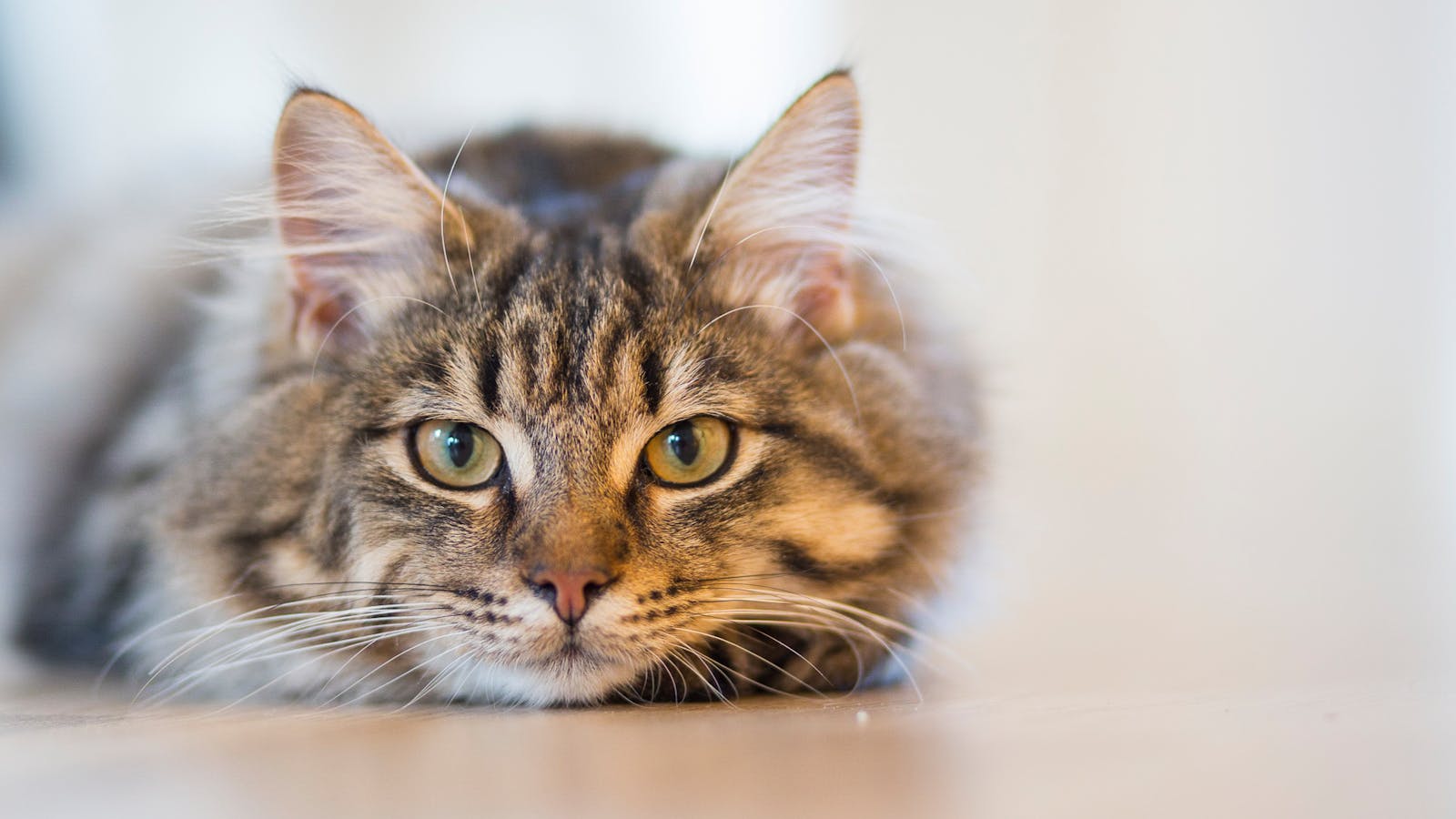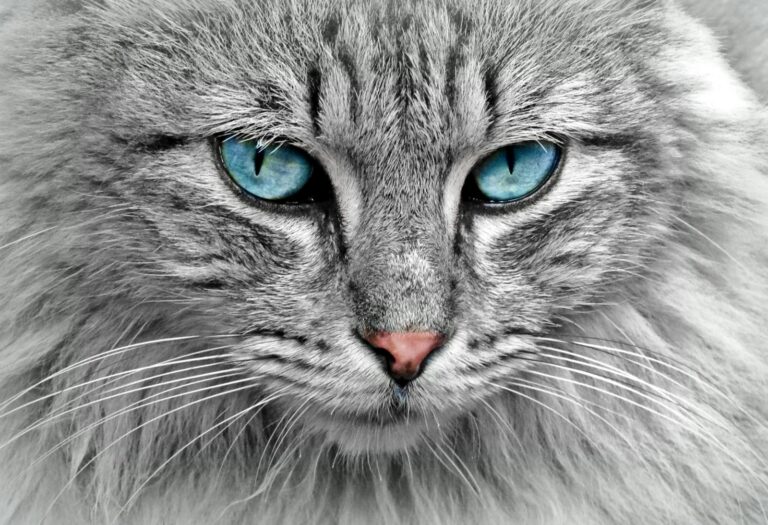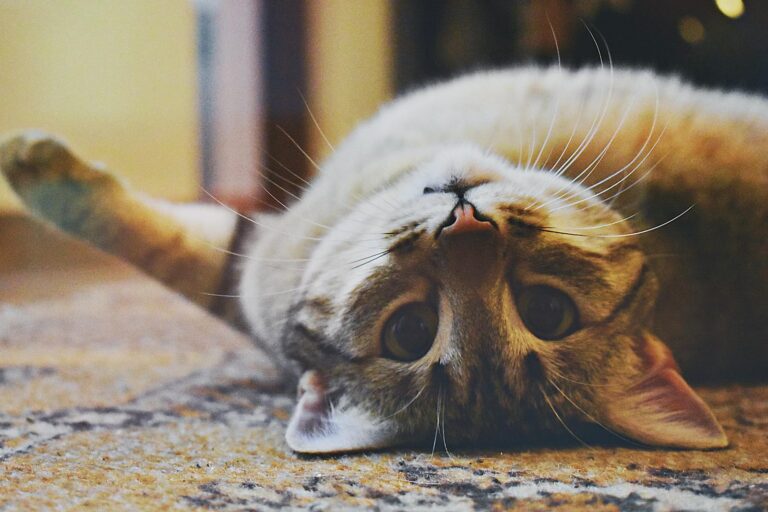Engaging Indoor Cat Activities – Best Indoor Cat Activities to Prevent Boredom
As a devoted cat parent, ensuring your feline friend remains happy and engaged is vital for their overall well-being. Finding the Best Indoor Cat Activities to Prevent Boredom can significantly improve their quality of life and foster a bond that flourishes through play and interaction. This article explores various stimulating activities and strategies to keep your indoor kitty entertained, healthy, and enriched.
Introduction: Understanding and Addressing Indoor Cat Boredom
Indoor cats are often limited in their environment compared to their outdoor counterparts. While they may enjoy the safety and comfort of home, the lack of natural stimuli can lead to boredom, stress, and even behavioral issues. As responsible pet owners, it’s crucial to recognize the signs of boredom and provide our furry companions with an enriching indoor experience.
In this section, we’ll delve into the reasons behind indoor cat boredom and explore some engaging activities that combat these feelings. By understanding your cat’s behavior and needs, you can create a more stimulating atmosphere that encourages exploration and playfulness.
Recognizing Signs of Boredom in Cats
Cats communicate their feelings and desires in various ways, but recognizing the signs of boredom can sometimes be challenging. It’s essential to pay attention to changes in behavior to identify when your kitty feels restless or unfulfilled.
Common signs of boredom include:
- Excessive Sleeping: While cats naturally sleep a lot, unusually long naptimes can indicate disinterest in their surroundings.
- Destructive Behavior: Scratching furniture, knocking over items, or chewing on non-toy objects can signal that your cat is looking for stimulation.
- Vocalization: Increased meowing or yowling might mean your cat is expressing frustration due to lack of engagement.
Being attentive to these signs will give you insights into how to adjust their environment or routine to prevent boredom.
The Impact of Boredom on Feline Behavior
Boredom doesn’t just affect a cat’s happiness; it can also lead to detrimental behaviors and health issues. Stress caused by boredom can result in:
- Obesity: Lack of physical activity leads to weight gain, which can trigger other health concerns like diabetes and joint problems.
- Aggression: Frustrated cats may lash out at humans or other pets, leading to conflicts within the household.
- Litter Box Issues: Stress and anxiety may cause your cat to avoid their litter box, leading to inappropriate elimination behaviors.
By addressing boredom proactively with engaging activities, you can safeguard your cat’s mental and physical health.
Importance of Enrichment for Indoor Cats
Environmental enrichment plays a pivotal role in enhancing a cat’s quality of life. It involves providing various stimuli—physical, social, and cognitive—that cater to their natural instincts. Enrichment activities keep them mentally agile and physically active, promoting a happier, healthier lifestyle.
The key benefits of providing enrichment include:
- Improved Mental Stimulation: Engaging your cat in different activities helps keep their cognitive functions sharp as they learn and explore new things.
- Enhanced Physical Health: Interactive play encourages exercise, reducing the risk of obesity and strengthening muscles.
- Stronger Bond Between You and Your Cat: Participating in activities together fosters trust and affection, creating a deeper emotional connection between you and your pet.
In the following sections, we’ll discuss practical ideas and activities that will help you incorporate enrichment into your indoor cat’s daily routine.
Enriching the Environment: Creating a Stimulating Indoor Space
A well-designed environment can significantly impact your cat’s mood and behavior. By incorporating elements that promote exploration and play, you’ll create a space that keeps their curiosity alive and thriving. Here are some effective ways to enrich your indoor cat’s environment:
Utilizing Natural Light and Views
Cats are instinctively attracted to natural light and views from windows. Providing access to these elements can spark their interest and encourage exploration.
- Window Perches: Install a perch or cat tree near windows so your cat can watch birds, squirrels, and other outdoor happenings. This creates a dynamic viewing experience that mimics hunting behavior.
- Sheer Curtains: Allow filtered sunlight while keeping the view unobstructed with sheer curtains. Cats love soaking up the sun, which can also be soothing and calming.
- Bird Feeders: Hang bird feeders outside your window to attract local wildlife, giving your cat something to observe and engage with throughout the day.
Natural light and views create a stimulating backdrop that inspires curiosity and observation, fulfilling your cat’s innate desire to explore their territory.
Adding Vertical Spaces for Climbing and Exploration
Cats thrive in environments where they can climb and explore vertical spaces. By incorporating climbing structures, you allow them to exhibit their natural feline behaviors.
- Cat Trees and Shelves: Provide multi-tiered cat trees or floating shelves for climbing and resting. These structures not only stimulate exercise but also create safe zones where your cat can survey their kingdom.
- Wall-Mounted Routes: Consider installing wall-mounted pathways that connect various levels of your home, enabling your cat to traverse vertically and explore new territories.
- Boxes and Hideaways: Create hideaway spots using cardboard boxes or tunnels, allowing your cat to navigate through their environment creatively.
Vertical spaces not only offer physical exercise but also contribute to your cat’s confidence and territorial instincts.
Incorporating Sensory Elements
Enhancing your cat’s environment with sensory elements can further engage their curiosity and stimulate their senses.
- Catnip and Herbs: Plant catnip or other cat-safe herbs like valerian and wheatgrass in pots around your home. Many cats are attracted to these plants, providing olfactory stimulation and encouraging playful behavior.
- Textured Surfaces: Incorporate varying textures in your home, such as rugs, scratching posts, and soft blankets, for your cat to explore with their paws and claws.
- Interactive Lights: Use laser pointers or toys with lights that move unpredictably to entice your cat to chase and pounce. Remember to reward them with treats occasionally to maintain interest.
Creating a sensory-rich environment will captivate your cat’s attention and encourage active engagement with their surroundings.
Interactive Playtime: Engaging Activities for Physical and Mental Stimulation
Active playtime is essential for both your cat’s physical fitness and mental development. Engaging in regular interactive sessions fosters bonding while allowing your cat to express their natural hunting instincts. Here, we explore various interactive play options to keep your indoor cat stimulated.
Wand Toys for Hunting Simulation
Wand toys mimic the movement of prey, making them a fantastic choice for interactive play. They encourage your cat to stalk, pounce, and chase, satisfying their predatory instincts.
- Feather Toys: Attach feathers to the end of a wand to imitate bird movements. The erratic flapping typically incites excitement and curiosity in most cats.
- String and Ribbon Variations: Experiment with different materials such as ribbons or strings that can drag along the floor or dangle in mid-air. Ensure that these materials are safe and supervise play to prevent ingestion.
- DIY Alternatives: Create your own wand toy using items around your home, such as tying a small toy or a piece of fabric to a stick. Get creative!
Engaging your cat with wand toys not only provides mental stimulation but also promotes physical exercise as they leap and dart after their “prey.”
Laser Pointers as a Fun Chase Game
Laser pointers bring an exciting twist to interactive playtime. Cats are captivated by the unpredictable movements of the laser dot, triggering their instinctual chasing response.
- Short Sessions: Keep laser pointer sessions brief (about 10 minutes) to prevent frustration if the cat can’t catch the elusive spot. Always end with a tangible toy or treat to ensure satisfaction.
- Variety of Movements: Move the laser pointer in various patterns and speeds to maintain interest. Mix swift movements with slower ones to create engaging play dynamics.
- Safety Precautions: Always avoid shining the laser directly in your cat’s eyes, as it can cause discomfort or damage.
Using a laser pointer in a controlled manner can provide an exhilarating experience for your cat, helping them burn off pent-up energy.
Puzzle Toys for Engaging the Mind
Puzzle toys blend fun with problem-solving, providing mental challenges that captivate your cat’s attention. These toys require your cat to think critically and work for their rewards.
- Treat Dispensers: Invest in toys that release treats when manipulated correctly. This encourages your cat to explore different methods to obtain their rewards.
- Hide-and-Seek Games: Use boxes or containers with holes to hide treats or toys. This mimics a treasure hunt and engages your cat’s instincts to seek.
- DIY Puzzle Toys: Create simple puzzle toys at home using cardboard boxes, plastic bottles, or old egg cartons. Fill them with treats and let your cat figure out how to access the goodies.
Puzzle toys provide a multifaceted approach to play, fostering critical thinking skills while satisfying your cat’s desire for stimulation.
Puzzle Toys and Food Dispensers: Providing Mental Challenges and Entertainment
Puzzle toys and food dispensers are excellent tools for providing mental stimulation while rewarding your cat’s natural problem-solving abilities. In this section, we’ll explore the benefits of these toys and how to integrate them into your cat’s routine effectively.
Benefits of Puzzle Toys for Cats
Puzzle toys offer numerous advantages that enhance your cat’s quality of life. By engaging their minds, you pave the way for a more fulfilling indoor experience.
- Cognitive Development: Engaging in problem-solving activities keeps your cat’s mind sharp, similar to brain exercises for humans. This can help reduce cognitive decline in older cats.
- Reduced Boredom: By offering challenges, puzzle toys help stave off boredom that can lead to destructive behaviors. Keeping them occupied reduces frustration and promotes a positive environment.
- Encouragement of Natural Instincts: Puzzle toys mimic hunting scenarios, enticing your cat to think critically and use their instincts to succeed. This not only entertains them but satisfies their primal urges.
Incorporating puzzle toys into your cat’s daily routine is a fantastic way to enrich their lives and keep their minds active.
Types of Puzzle Toys and How to Use Them
There are various types of puzzle toys available on the market, each designed to cater to your cat’s unique preferences and challenge level.
- Basic Treat Ball: A simple ball that dispenses treats as your cat rolls it around encourages movement and playfulness. Begin with larger openings to allow easy access to rewards and gradually make it challenging.
- Multi-Chambered Toys: These require your cat to perform specific actions to release treats. Introduce them slowly, offering guidance initially until your cat learns the mechanics.
- Interactive Scratching Posts: Some scratching posts come equipped with puzzle elements that your cat must solve to receive rewards. This combines multiple instincts into one activity—scratching, playing, and problem-solving.
When introducing puzzle toys, always monitor your cat’s interactions to ensure they understand how to engage with the toy appropriately.
DIY Puzzle Toys to Engage Your Cat’s Curiosity
Creating your own puzzle toys can be fun and cost-effective. It allows you to customize the challenge based on your cat’s skill level and interests.
- Tissue Boxes: Fill an empty tissue box with crumpled paper and hidden treats. Your cat will have a blast fishing out the treats while enjoying the texture.
- Egg Carton Challenge: Place treats inside the cups of an egg carton, closing it slightly. Your cat will need to figure out how to open it gently to get to the treats.
- Toilet Paper Rolls: Cut holes into toilet paper rolls and fill them with treats. Seal the ends with tape and watch your cat roll it around to find the rewards.
DIY puzzle toys allow for creativity and personalization, igniting your cat’s curiosity while providing enjoyment.
Vertical Space and Exploration: Utilizing Height to Encourage Activity
Cats are natural climbers, and incorporating vertical space into their environment can inspire imaginative play and exploration. In this section, we’ll uncover the importance of verticality for indoor cats and how to create engaging high spaces.
Understanding the Importance of Vertical Space for Cats
Vertical space is essential for a cat’s psychological well-being. Elevation offers opportunities for exploration and security, satisfying their instincts to survey their territory.
- Territorial Behavior: Cats feel safer when they can elevate themselves above ground-level threats. Having high perches allows them to observe their surroundings comfortably.
- Social Hierarchy: Cats often establish a hierarchy among household pets. Providing high spaces enables them to assert their dominance or retreat when feeling threatened.
- Physical Exercise: Climbing and jumping help maintain physical fitness. Encouraging them to utilize vertical space promotes muscle strength and coordination.
Integrating vertical spaces into your home can provide endless opportunities for engagement and fulfillment.
Options for Creating Vertical Space
There are many creative ways to incorporate vertical space into your home while catering to your cat’s needs for exploration.
- Cat Trees and Towers: Invest in cat trees or towers that provide multiple levels for climbing and lounging. Choose designs that fit your interior decor and your cat’s preferences.
- Wall Shelving: Install sturdy shelves at various heights, allowing your cat to navigate the walls. This adds a unique design element while creating a climbing route.
- Hammocks and Perches: Mount hammocks or perches near windows for sunbathing and bird-watching. These cozy spots become favorite hangouts for your cat.
Creating vertical spaces encourages your cat to explore and engage with their environment actively.
Encouraging Climbing and Exploration
Once you’ve established vertical spaces, it’s important to motivate your cat to utilize them. Here are some tips to encourage climbing and exploration:
- Treat Rewards: Use treats or toys to lure your cat up to higher surfaces. When they reach the top, reward them with praise or a treat to reinforce positive behavior.
- Interactive Play: Engage your cat in games near vertical spaces. Use wand toys or laser pointers to entice them to jump and climb.
- Routine Revisions: Regularly change the layout of toys and beddings on elevated surfaces. This encourages exploration as your cat discovers new scents and experiences.
By motivating your cat to utilize vertical spaces, you nurture their natural instincts while keeping them entertained.
Consistent Routine and Monitoring: Maintaining a Happy and Healthy Indoor Cat
Establishing a consistent routine is vital for your indoor cat’s happiness. Routines create predictability, reduce anxiety, and provide opportunities for play and engagement. In this final section, we’ll touch upon the importance of monitoring your cat’s activities and maintaining a stable routine.
Establishing Daily Routines
Creating a daily schedule fosters a sense of security for your cat by reinforcing predictability in their life.
- Feeding Times: Set fixed feeding times to develop a structured eating pattern. This also allows you to monitor their appetite and detect any potential health issues.
- Play Sessions: Designate specific times for play each day, reinforcing the notion that playtime is a vital part of your routine. Aim for multiple short sessions rather than one long playtime.
- Quiet Time: Ensure there are quiet periods throughout the day where your cat can relax undisturbed. Balance between play and rest is essential for your cat’s well-being.
A consistent routine provides stability while establishing a rhythm that both you and your cat can appreciate.
Monitoring Your Cat’s Behavior and Needs
Understanding your cat’s behavior is fundamental in recognizing their needs and adapting their environment accordingly.
- Daily Observation: Regularly observe your cat’s interactions, preferences, and habits. Notice any changes in behavior that may indicate boredom or stress.
- Engagement Levels: Track how well your cat responds to different activities and toys. Take note of their favorites and rotate them to maintain interest.
- Health Indicators: Pay attention to any changes in appetite, energy levels, or litter box habits. Consult your veterinarian if you notice anything unusual, as early detection is crucial for feline health.
By monitoring your cat’s behavior, you can tailor your approach to their evolving needs, ensuring a fulfilling indoor experience.
Adapting to Changes in Lifestyle
Life is full of changes, from moving homes to welcoming new family members—or even adjusting work schedules. How you adapt your cat’s routines during these transitions is crucial.
- Gradual Introductions: If introducing new pets or people, do so gradually. Allow your cat to acclimate to changes without overwhelming them.
- Routine Adjustments: Changes in your schedule may require adjustments to playtimes or feeding. Be mindful of your cat’s reactions and adapt when necessary to maintain stability.
- Continued Enrichment: Even during lifestyle changes, continue providing enrichment activities. Explore new toys or activities that can accommodate your current situation.
Flexibility is essential in maintaining your cat’s happiness amid changes, ensuring they continue to flourish in their indoor environment.
Conclusion
Keeping your indoor cat engaged and fulfilled is vital for their overall happiness and health. By understanding the causes of boredom and implementing the Best Indoor Cat Activities to Prevent Boredom, you can create a rich environment filled with opportunities for play, exploration, and mental stimulation. From enriching their living space to facilitating interactive playtime and providing puzzles, various strategies can prompt your feline friend to thrive. By consistently monitoring their behavior and adapting to their needs, you pave the way for a joyful and fulfilling life for your beloved companion.







